Test Bank for Aging and Older Adulthood 3rd Edition Joan T Erber Download
$38.00
Title: Test Bank for Aging and Older Adulthood 3rd Edition Joan T Erber Download
Edition: 3rd Edition
ISBN-10: 0470673419
ISBN-13: 978-0470673416
- Description
- Reviews (0)
Description
You will receive this product immediate after placing the order
***THIS IS NOT THE ACTUAL BOOK. YOU ARE BUYING the Test Bank in e-version of the following book***
Title: Test Bank for Aging and Older Adulthood 3rd Edition Joan T Erber Download
Edition: 3rd Edition
ISBN-10: 0470673419
ISBN-13: 978-0470673416
– The test bank is what most professors use an a reference when making exams for their students, which means there’s a very high chance that you will see a very similar, if not exact the exact, question in the test!
– The file is either in pdf, doc, rtf or zipped in the package and can easily be read on PCs and Macs.
– Delivery is INSTANT. You can download the files IMMEDIATELY once payment is done.
We also faced similar difficulities when we were students, and we understand how you feel.
But now, with the Test Bank for Aging and Older Adulthood 3rd Edition Joan T Erber Download, you will be able to
* Anticipate the type of the questions that will appear in your exam.
* Reduces the hassle and stress of your student life.
* Improve your studying and also get a better grade!
* Get prepared for examination questions.
* Can save you time and help you understand the material.
This is the quality of service we are providing and we hope to be your helper.
Delivery is in the next moment. Test Bank is accurate.
If you have any questions, or would like a receive a sample chapter before your purchase, please contact us at inquiry@testbanksafe.com
Chapter 1
MULTIPLE-CHOICE QUESTIONS
Select the best answer from the options provided.
1. The National Institute on Aging was established in ________.
a. 1920
b. 1945
c. 1974 *
d. 1996
2. The branch of medicine concerned with treating and managing diseases related to aging is ___________.
a. senescence
b. gerontology
c. cryonics
d. geriatrics *
3. The study of the biological, behavioral, and social phenomena that occur from the point of maturity to old age is ___________.
a. gerontology *
b. geriatrics
c. histrionics
d. demographics
4. Until recently, a two-stages-of-life viewpoint was prevalent in developmental psychology. According to this perspective, physical and psychological functions were thought to _______________.
a. develop over the entire life span reaching a peak point in older adulthood
b. develop to a peak point in young adulthood but decline after that *
c. develop to a peak point in late middle-adulthood but decline after that
d. develop to a peak point of middle-adulthood and remain stable after that
5. John is 58 years old but when he went for his last check-up, his doctor told him that his blood pressure and cardiovascular functioning were similar to that of the average 75-year-old. In terms of biological age, John would be considered __________ .
a. young
b. middle-aged
c. old *
6. Georgina enjoys eating in a new restaurant every weekend and taking a vacation to a different place every year. Georgina would be considered ________ compared to Madge, who likes to eat at the same restaurant every week and return to the same vacation spot every year.
a. psychologically younger *
b. psychologically older
c. psychologically the same age
7. At age 55, Maria has decided to fulfill a long-time dream of becoming a lawyer and she is studying for the law school entrance exam (LSAT). Her best friend Vivien, also age 55, has decided to sell her house and move into a retirement community, where she will spend her leisure time playing cards in the community club house. In terms of social age, Vivien would be considered _______________.
a. older than Maria *
b. younger than Maria
c. the same as Maria
8. George lived with his parents until he got married at the age of 40. At the age of 45, George became a parent. Compared to other men of the same chronological age, George would be considered ___________.
a. socially older
b. socially younger *
c. socially about the same
9. Krueger, Heckhausen, and Hundertmark asked adults from a wide range of ages what they thought of a 45-year-old woman who either (a) had been married for 20 years, had children ages 19 and 17, and worked as a bank manager or (b) had been married five years, had one young child, and worked at an entry-level bank job with hopes of being promoted. Which of the following best describes the findings of this study?
a. Study participants had a more positive view of (b) than they did of (a).
b. Study participants had a more positive view of (a) than they did of (b). *
c. Study participants had an equally positive view of (a) and (b).
d. Study participants had an equally negative view of (a) and (b).
10. Research on the relationship between chronological age and how old a person feels indicates that middle-aged and older adults usually feel __________.
a. older than they are
b. younger than they are *
c. the same age as they are
11. Research on the relationship between chronological age and how old a person feels has found that young adults feel ______, and older adults feel ________.
a. older than they are; just about their own age
b. just about their own age; younger than they are *
c. younger than they are; older than they are
d. older than they are; younger than they are
12. In the United States, which chronological age traditionally signifies entry into the older adult age group?
a. 55
b. 60
c. 65 *
d. 70
13. The ages of ______ define the category of older adulthood that is often referred to as “young-old.”
a. 55–64
b. 65–74 *
c. 75–84
d. 85 and older
14. Ageism is shown when people ______________.
a. have low expectations about older adults’ cognitive or social capabilities.
b. discriminate against others based on their age.
c. view older adults as helpless.
d. All of the above *
15. Which of the following terms would be considered by older adults to be the most favorable?
a. The aged
b. Senior citizens
c. Older adults *
d. All of the above are equally favorable
16. According to a study by Hummert, which of the following stereotypes do young adult college students have about older adults?
a. Set in ways
b. Loving
c. Generous
d. All of the above *
17. Demography is the scientific study of _____________.
a. populations *
b. therapeutic outcomes
c. family relationships
d. small group behavior
18. The baby boom generation refers to individuals born between ________.
a. 1990–2000
b. 1980–1990
c. 1946–1964 *
d. 1929–1940
19. The first wave of baby boomers_______.
a. celebrated their 65th birthday in the year 2011 *
b. celebrated their 60th birthday in 2010
c. will begin to turn 65 in 2020
d. will not turn 65 until 2030
20. Which of the following has the lowest proportion of its population in the 65+ age range?
a. Europe
b. Africa *
c. North America
d. Oceania
21. Which is the closest estimate of the percentage of the U.S. population that will be aged 65+ by the year 2030?
a. 5%
b. 10%
c. 15%
d. 20% *
22. Which factor(s) is (are) important to consider when projecting what proportion of the United States population will be ages 65+ within the next 20 years?
a. Numbers in the baby boom generation
b. Birth rate
c. Neither of the above
d. Both of the above *
23. When a population pyramid graph is actually shaped like a pyramid (as it was in 1900), which of following best describes the birth rate and death rate of the population?
a. Low birth rate and low death rate
b. High birth rate and low death rate
c. High birth rate and high death rate *
d. Low birth rate and high death rate
24. In which year is the population pyramid graph for the United States shaped most like a pyramid?
a. 1900 *
b. 1970
c. 1975
d. 2030
25. In the United States, the fastest growing segment of the older adult population in the United States is ___________.
a. the young-old age group
b. the old-old age group
c. the oldest-old age group *
d. All of the above are equally fast-growing
26. Which is the most accurate statement about older (ages 65+) men and women in the United States at the present time?
a. There are more older men than there are older women.
b. A larger proportion of older women than older men are married.
c. More older women than older men live alone. *
d. More older men than older women live with family members other than a spouse.
27. Which older adult is most likely to be found living in a nursing home on a permanent basis?
a. A European American man
b. A European American woman *
c. An African American woman
d. A Hispanic American man
28. Which of the following make up the largest proportion of the older (65+) adult population in the United States?
a. European Americans *
b. Asian Americans and Pacific Islanders
c. African Americans
d. Hispanic Americans
29. Although the economic status of older adults in the United States has improved over time, which older adults are most likely to be living close to poverty level?
a. A Hispanic American widow *
b. An European American man
c. A European American woman who lives with her spouse
d. All of the above are equally likely to be living close to poverty level
30. Older adults who choose to relocate to areas of the country where the climate is milder tend to __________.
a. be in their 60s and in good health *
b. be in their 70s and to have limited incomes
c. be in their 80s and to have health problems
d. outnumber those who remain in the same geographical location
31. Which event would be considered a normative age-graded influence on development?
a. Economic recession
b. A woman’s reaching menopause in the 50s *
c. A man’s job retirement at age 45
d. Winning the lottery
32. In the United States, which is most likely to be considered a normative age-graded influence on development?
a. Losing a job in an economic recession
b. Job retirement at age 65 *
c. Being diagnosed with heart disease at the age of 35
d. Winning the lottery
33. In the United States, which would be considered a normative history-graded influence on development?
a. Introduction of cell phones and iPods *
b. Retiring from full-time work at the age of 40
c. Being a full-time student until the age of 18
d. A woman’s reaching menopause at the age of 50
34. What is the best example of a nonnormative life event?
a. An event that has very little impact on the life of the individual who experiences it.
b. A typical event that occurs at a standard time of life (e.g., graduating from high school at age 18).
c. An event that influences everyone in a particular culture.
d. An unexpected event such as being diagnosed with a rare illness. *
35. Nature/nurture is an important theme in developmental psychology. Nature refers to _______ and nurture refers to ________.
a. genetic factors; environmental factors *
b. life experience; hereditary factors
c. environmental factors; life experiences
d. biological factors; hereditary factors
36. According to the Selective Optimization with Compensation (SOC) Model, people who adapt best to the aging process are those who _______________.
a. put their energies into as many skills and activities as possible
b. choose a few skills and activities on which to focus their energies *
c. sit back, relax, and let other people take the lead on everything
d. hold the highest standards and expectations in all areas of functioning
37. According to the ecological model of aging, ____________.
a. people adapt best to environments that present a high degree of challenge, or press
b. people adapt best to environments that present a low degree of press
c. people adapt best when environmental press is tailored to their own level of competence *
d. older adults are at the mercy of other people to shape their environment
SHORT ANSWER QUESTIONS
1. Name two reasons why the study of aging and older adulthood developed later than the study of childhood and adolescence?
Up until relatively recently, it had been believed personality development takes place primarily in childhood and adolescence. Once adulthood was reached, personality was formed and there was no more change. Also, physical and psychological functions were thought to develop to the point of maturity and then began a decline from the peak reached in young adulthood. Another reason the study of aging and older adulthood began later is that the number and proportion of older adults was relatively small, as not that many people lived into older adulthood.
2. Interest in the study of aging and older adulthood has arisen from concerns of a scientific nature, but it also stems from those of a personal and/or practical nature. Briefly describe what each of these concerns entails.
Most of what we know about adult development has been based mainly on tests, observations, and interviews with young adults. From a scientific point of view, it is important to determine whether the findings of studies on these young adult samples apply to older adults. As regards personal concerns, knowledge about aging and older adulthood can give us insight into changes that we are experiencing or can expect to experience as we get older. Such insight can be helpful when we plan specific events such as our own retirement or make decisions about how and where we want to live in our older adult years. We may also be interested in and concerned about others as they grow older, and knowledge about aging will help us cope with dilemmas involving older family members and friends. As far as practical concerns, knowledge about aging and older adulthood is valuable because our population is aging. Those working in health services will spend a great deal of time serving older adults. Educators will have more older adult students in their college and university classes. Those who work in business settings will also benefit from knowledge about the aging process because employees will probably remain in the paid labor force until later in life. Those in housing management, real estate, and banking will have older adult clients. Older adults will become important as consumers of manufactured products, so more items will be designed for the older adult market. With regard to architectural planning, knowledge about aging will be needed when designing living environments for older adults.
3. What is biological age and how is it related to chronological age?
One definition of biological age is where people stand relative to the number of years they will live. However, this is difficult to determine for a given individual. With regard to physical appearance and functioning of various organ systems, a comparison can be made between one individual and others of the same chronological age. For example, a 70-year-old individual with no wrinkles might be considered biologically younger than the average 70-year-old who does have wrinkles. A 70-year-old individual with a larger than average lung capacity compared to others the same chronological age could be considered biologically young.
4. What is functional age? Give an example of a person who is functionally young and one who is functionally old.
Functional age has to do with a person’s competence in carrying out specific tasks. As with biological age, functional age involves comparison with chronological age peers. A person is functionally young when his or her competence in carrying out a specific task (e.g., driving at night) compares favorably with that of age peers. A person is functionally old when his or her competence in carrying out a specific task (e.g., walking around the block) compares unfavorably with that of age peers. In many cases, a given individual can vary in functional age depending on the specific type of task involved.
5. What is social age, and how are chronological age and social age related?
Chronological age is just units of time that have elapsed since birth, whereas social age is related to the unwritten rules members of society hold about what individuals of a particular chronological age should do and how they should behave. For example, in American society there is an expectation that individuals will be full-time students until they are at least 18 and in many cases 22 years old. It is expected that middle-aged adults will have established their families and careers. It is also expected that older adults will be retired from the paid work force.
6. Briefly describe the three-tier categorization of older adulthood into the “young-old,” “old-old,” and “oldest-old.”
This three-tier categorization is one way to acknowledge that adults aged 65 and over are not a homogeneous group. Young-old refers to individuals aged 65–74; old-old refers to individuals aged 75–84; oldest-old refers to individuals aged 85+. In general, the young-old have the greatest physical vigor and do not differ much from those in late middle-age. In general, the old-old experience more changes in sensory, perceptual, and cognitive functioning. In general, individuals in the oldest-old group have more health problems and the greatest need for services.
7. What is ageism and what forms can it take?
Ageism refers to discriminatory attitudes directed toward older adults. It implies negative beliefs, or stereotypes, about older adults as a group. Ageism can manifest itself in low expectations about an individual older adult’s cognitive or social capabilities. A more subtle form of ageism may be seen in compassionate stereotypes of older adults as persons who are helpless and in need of advocacy.
8. The population pyramid is a graph depicting the proportion of males and females in the United States population at any given point in time. Explain why the graph was actually shaped like a pyramid in 1900, but by the year 2030 it will not resemble a pyramid at all.
In 1900 the graph had the shape of a pyramid because the percent of the population in each 5-year-category was slightly smaller than the one immediately beneath it. This shape was the result of a high birth rate and a high death rate. By 2030 the graph will resemble a bean pole rather than a pyramid because of a constant and low birth rate and low death rate. Compared to 1900, fewer babies are born but those who are have a greater chance of living into late older adulthood.
9. Give a brief description of today’s older adult age group in the United States. Mention gender proportion, marital status, racial/ethnic composition, education level, and economic status.
In the United States, there is a greater proportion of older women than of older men. Also, a greater proportion of older women than older men are widowed. Conversely, a greater proportion of older men than older women are married. At the present time, the majority of older adults are European American. The older adults of today have achieved a higher level of education compared to older adults in the past. The poverty rate in the older age group is lower today than in the past, but there are still some older adults (more women and minorities) that fall at or below poverty level.
10. What kind of developmental influence is represented by the widespread use of personal computers? Explain your answer.
The widespread use of personal computers is best considered a normative history-graded influence. The use of computers and dependence on technology has had an effect on all members of society to some extent. It has changed the way we obtain information, how we make purchases, and how we communicate with one another. Children learn to use computers at any early age and many older adults are adopting their use as well.
11. The relative influence of nature and nurture has been a theme in the study of development. What is nature and what is nurture? Why is it especially difficult to study this issue in older adults?
Nature refers to hereditary, genetic, and biological factors. Nurture refers to environmental factors and life experience. In older adults, nature and nurture have interacted over an extended period of time and this makes it difficult to disentangle the relative importance of these two sources of influence on the aging process with regard to issues related to health and longevity.
12. Explain how the Selective Optimization with Compensation (SOC) Model can be used to describe successful aging?
The SOC Model is based on the assumption that individuals engage in adaptation throughout their lives. They are capable of learning and changing. If losses are experienced by older adults, they can adapt to such losses by selecting and concentrating efforts on domains in which a high level of functioning can be maintained.
Be the first to review “Test Bank for Aging and Older Adulthood 3rd Edition Joan T Erber Download”
You must be logged in to post a review.

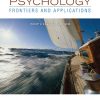

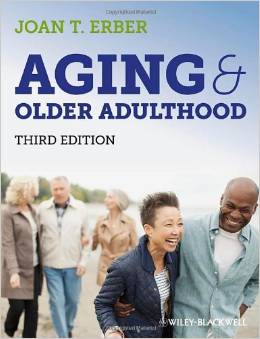
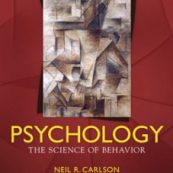
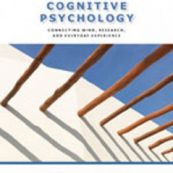
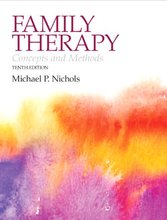
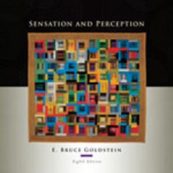
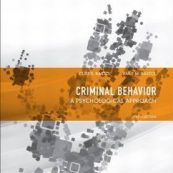
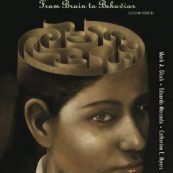
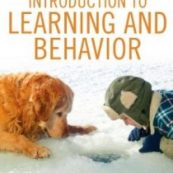
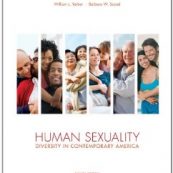
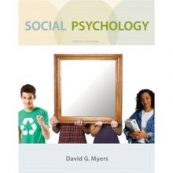
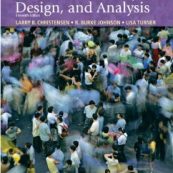
Reviews
There are no reviews yet.